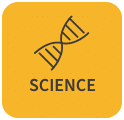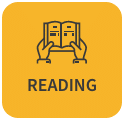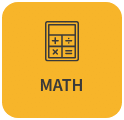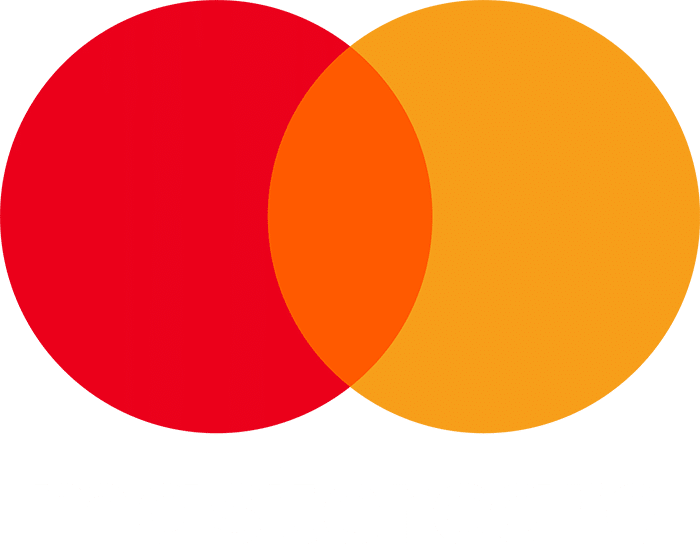- Ontario:
- Math
- Language Arts
- Social Studies
- Science
Ontario
Skills available for Ontario Grade 2 Math Curriculum (2020)
Expectations are in black and skills are in blue. Click on the name of the skill to practice that skill.
Please check back as we are always adding more content!
2.B Number
2.B1 Number Sense
Whole Numbers
B1.1 read, represent, compose, and decompose whole numbers up to and including 200, using a variety of tools and strategies, and describe various ways they are used in everyday life
Digital Resources
Printable Worksheets
• Representing Numbers in Different Ways – Set 1
• Representing Numbers in Different Ways – Set 2
• Counting Tens and Ones – Set 1
• Counting Tens and Ones – Set 2
• Writing Numbers in Different Ways
B1.2 compare and order whole numbers up to and including 200, in various contexts
Digital Resources
Printable Worksheets
B1.3 estimate the number of objects in collections of up to 200 and verify their estimates by counting
B1.4 count to 200, including by 20s, 25s, and 50s, using a variety of tools and strategies
B1.5 describe what makes a number even or odd
Fractions
B1.6 use drawings to represent, solve, and compare the results of fair-share problems that involve sharing up to 10 items among 2, 3, 4, and 6 sharers, including problems that result in whole numbers, mixed numbers, and fractional amounts
Digital Resources
Printable Worksheets
• Identifying Fractions – Set 1
• Identifying Fractions – Set 2
• Identifying Fractions – Set 3
• Fair Share: Word Problems – Set 1
• Fair Share: Word Problems – Set 2
• Fair Share: Word Problems – Set 3
• Exploring Equal Parts of Shapes
• Exploring Equal Parts – At the Beach
• Exploring Equal Parts – Halves and Fourths
• Sharing Sandwiches – Fair Share
• Sharing Popsicles – Fair Share
• Sharing Milkshakes – Fair Share
• Sharing Hamburgers – Fair Share
B1.7 recognize that one third and two-sixths of the same whole are equal, in fair-sharing contexts
5.B2 Operations
Properties and Relationships
B2.1 use the properties of addition and subtraction, and the relationships between addition and multiplication and between subtraction and division, to solve problems and check calculations
Digital Resources
Printable Worksheets
• Addition and Subtraction Problems
• Numbers Can Be Added in Any Order – 10
• Numbers Can be Added in Any Order – 20
Math Facts
B2.2 recall and demonstrate addition facts for numbers up to 20, and related subtraction facts
Digital Resources
Printable Worksheets
• Math Riddle – Addition Facts to 20
• Missing Numbers – Sums to 20
• Sum Fun
• Math Riddle – Addition Facts to 10
• Addition Facts for 2, 3, 4, and 5
• Addition Facts for 6, 7, 8, and 9
• Addition Practice – Sums from 11 to 20
• Subtraction Facts for 3, 4 ,or 5
• Subtraction Facts from 0 to 20
• Subtraction Facts from 0 to 5
• Subtraction Facts for 0, 1, or 2
• Subtraction Facts for 3, 4 ,or 5
• Subtraction Facts from 0 to 20
• Subtraction Facts from 0 to 12
Mental Math
B2.3 use mental math strategies, including estimation, to add and subtract whole numbers that add up to no more than 50, and explain the strategies used
Digital Resources
Printable Worksheets
• Take Apart Strategy for Addition
• Mental Math Strategies for Subtraction
• Taking Apart to Make Tens for Addition
• Adding 1 or 2 by Counting On
• Subtraction Word Problems – Set 1
• Subtraction Word Problems – Set 2
Addition and Subtraction
B2.4 use objects, diagrams, and equations to represent, describe, and solve situations involving addition and subtraction of whole numbers that add up to no more than 100
Digital Resources
Printable Worksheets
• Addition Practice – Sums to 10
• Use a Number Line to Subtract
Multiplication and Division
B2.5 represent multiplication as repeated equal groups, including groups of one half and one fourth, and solve related problems, using various tools and drawings
Digital Resources
• Multiplication Fact Practice
Printable Worksheets
• Introducing Multiplication – Set 1
• Introducing Multiplication – Set 2
• Arrays
B2.6 represent division of up to 12 items as the equal sharing of a quantity, and solve related problems, using various tools and drawings
Digital Resources
Printable Worksheets
• Introducing Division – Set 1
• Introducing Division – Set 2
• Relate Multiplication to Division – Set 1
• Relate Multiplication to Division – Set 2
2.C Algebra
2.C1 Patterns and Relationships
Patterns
C1.1 identify and describe a variety of patterns involving geometric designs, including patterns found in real-life contexts
C1.2 create and translate patterns using various representations, including shapes and numbers
C1.3 determine pattern rules and use them to extend patterns, make and justify predictions, and identify missing elements in patterns represented with shapes and numbers
Digital Resources
Printable Worksheets
C1.4 create and describe patterns to illustrate relationships among whole numbers up to 100
2.C2 Equations and Inequalities
Variables
C2.1 identify when symbols are being used as variables, and describe how they are being used
Equalities and Inequalities
C2.2 determine what needs to be added to or subtracted from addition and subtraction expressions to make them equivalent
Digital Resources
Printable Worksheets
• Exploring Addition Sentences – Set 1
• Exploring Addition Sentences – Set 2
• Making Equal Addition Expressions
• Finding the Missing Number – Set 1
• Finding the Missing Number – Set 2
• Exploring Subtraction Sentences – Set 1
C2.3 identify and use equivalent relationships for whole numbers up to 100, in various contexts
Digital Resources
Printable Worksheets
2.C3 Coding
Coding Skills
C3.1 solve problems and create computational representations of mathematical situations by writing and executing code, including code that involves sequential and concurrent events
Digital Resources
Printable Worksheets
• Exploring Writing Code – Set 1
• Exploring Writing Code – Set 2
• Exploring Writing Code – Set 3
• Exploring Writing Code – Set 4
• Writing Concurrent Code – Set 1
• Writing Concurrent Code – Set 2
C3.2 read and alter existing code, including code that involves sequential and concurrent events, and describe how changes to the code affect the outcomes
Digital Resources
Printable Worksheets
2.D Data
2.D1 Data Literacy
Data Collection and Organization
D1.1 sort sets of data about people or things according to two attributes, using tables and logic diagrams, including Venn and Carroll diagrams
Digital Resources
Printable Worksheets
D1.2 collect data through observations, experiments, and interviews to answer questions of interest that focus on two pieces of information, and organize the data in two-way tally tables
Data Visualization
D1.3 display sets of data, using one-to-one correspondence, in concrete graphs, pictographs, line plots, and bar graphs with proper sources, titles, and labels
Digital Resources
Printable Worksheets
• Representing Data in Different Ways – Set 1
• Representing Data in Different Ways – Set 2
• Exploring Bar Graphs – Set 1
• Exploring Bar Graphs – Set 2
• Exploring Bar Graphs – Set 3
• Exploring Bar Graphs – Set 4
• Exploring Bar Graphs – Set 5
• Exploring Bar Graphs – Set 6
• Exploring Bar Graphs – Set 7
Data Analysis
D1.4 identify the mode(s), if any, for various data sets presented in concrete graphs, pictographs, line plots, bar graphs, and tables, and explain what this measure indicates about the data
D1.5 analyse different sets of data presented in various ways, including in logic diagrams, line plots, and bar graphs, by asking and answering questions about the data and drawing conclusions, then make convincing arguments and informed decisions
Digital Resources
Printable Worksheets
• Exploring Pictographs – Set 1
• Exploring Pictographs – Set 2
• Reading Tally Charts – Set 1
• Reading Tally Charts – Set 2
• Reading Tally Charts – Set 3
• Reading Tally Charts – Set 4
2.D2 Probability
Probability
D2.1 use mathematical language, including the terms “impossible”, “possible”, and “certain”, to describe the likelihood of complementary events happening, and use that likelihood to make predictions and informed decisions
Digital Resources
Printable Worksheets
• What Is the Probability? – Set 1
D2.2 make and test predictions about the likelihood that the mode(s) of a data set from one population will be the same for data collected from a different population
2.E Spatial Sense
2.E1 Geometric and Spatial Reasoning
Geometric Reasoning
E1.1 sort and identify two-dimensional shapes by comparing number of sides, side lengths, angles, and number of lines of symmetry
Digital Resources
Printable Worksheets
• Geometry and Spatial Sense – Set 1
E1.2 compose and decompose two-dimensional shapes, and show that the area of a shape remains constant regardless of how its parts are rearranged
Digital Resources
Printable Worksheets
E1.3 identify congruent lengths and angles in two-dimensional shapes by mentally and physically matching them, and determine if the shapes are congruent
Location and Movement
E1.4 create and interpret simple maps of familiar places
Digital Resources
Printable Worksheets
E1.5 describe the relative positions of several objects and the movements needed to get from one object to another
Digital Resources
Printable Worksheets
• Location and Movement on a Grid
• Moving Locations on a Grid – Set 1
• Moving Locations on a Grid – Set 2
5.E2 Measurement
Length
E2.1 choose and use non-standard units appropriately to measure lengths, and describe the inverse relationship between the size of a unit and the number of units needed
Digital Resources
Printable Worksheets
• Measuring Using Non-Standard Units
E2.2 explain the relationship between centimetres and metres as units of length, and use benchmarks for these units to estimate lengths
E2.3 measure and draw lengths in centimetres and metres, using a measuring tool, and recognize the impact of starting at points other than zero
Digital Resources
Printable Worksheets
• Measuring Using Centimetres – Set 1
Time
E2.4 use units of time, including seconds, minutes, hours, and non-standard units, to describe the duration of various events
Digital Resources
Printable Worksheets
• Telling Time to the Hour – Set 1
• Telling Time to the Hour – Set 2
• Telling Time to the Hour – Set 3
• Telling Time to the Half Hour – Set 1
• Telling Time to the Half Hour – Set 2
• Telling Time to the Quarter Hour – Set 1
• Telling Time to the Quarter Hour – Set 2
• Telling Time to Quarter Past the Hour – Set 1
• Telling Time to Quarter Past the Hour – Set 2
2.F Financial Literacy
2.F1 Money and Finances
Money Concepts
F1.1 identify different ways of representing the same amount of money up to Canadian 200¢ using various combinations of coins, and up to $200 using various combinations of $1 and $2 coins and $5, $10, $20, $50, and $100 bills
Digital Resources
Printable Worksheets
• Show Two Different Ways to Make the Same Amount
• Solve the Money Riddle – Set 1
• Solve the Money Riddle – Set 2
• Counting Canadian Bills – Set 1
• Counting Canadian Bills – Set 2
• Showing Bill Amounts in Different Ways
• At the School Cafeteria – Set 1
• At the School Cafeteria – Set 2
• At the School Cafeteria – Set 3
• Getting to Know Coins – Set 1
• Getting to Know Coins – Set 2
• Getting to Know Coins – Set 3
• Getting to Know Coins – Set 4









